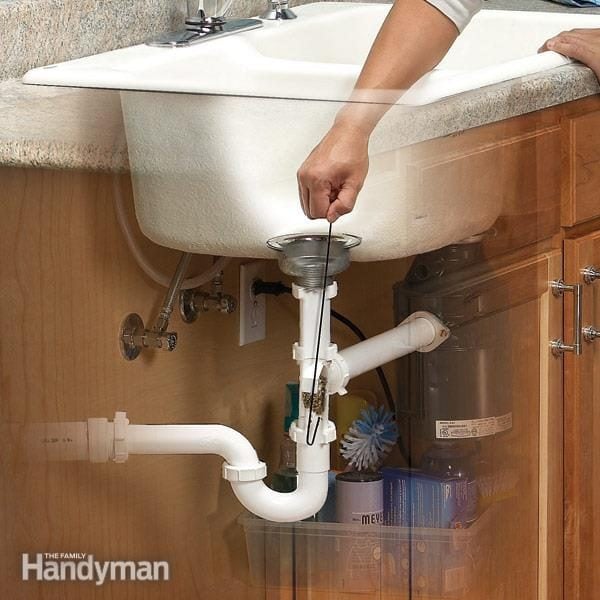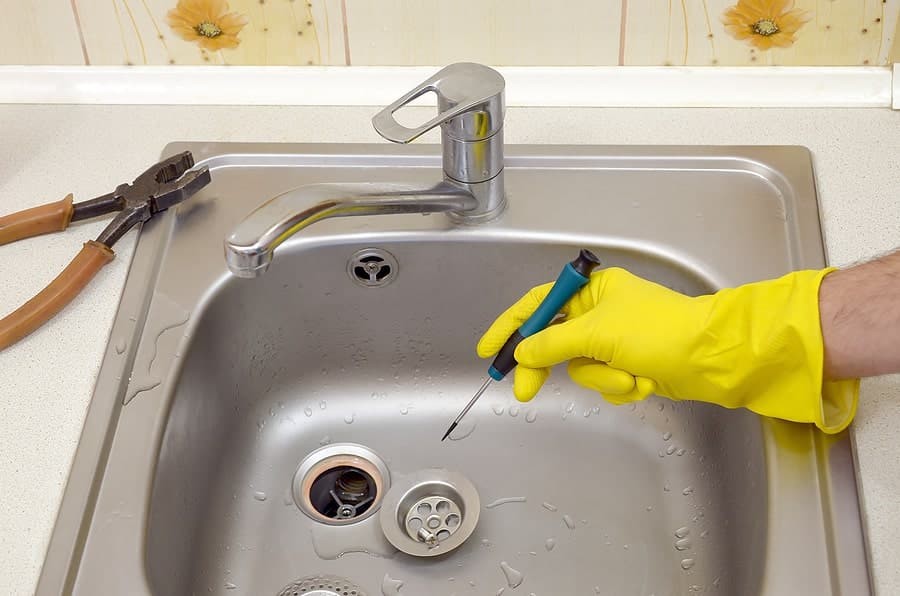Unlocking the Mysteries of Kitchen Sink Unclogging
Unlocking the Mysteries of Kitchen Sink Unclogging
Blog Article
Are you hunting for details around Common Household Plumbing Issues?

Clogged kitchen sinks are just one of one of the most typical drain issues house owners encounter. As well as what's even more, it's a very uncomfortable and also undesirable view. Think of mosting likely to the sink to do your recipes and also learning that the drainpipe is clogged and water can not move down conveniently.
The majority of stopped up drains are triggered by food particles, soap, fat, as well as oil fragments. They block the sink and make it hard for water to go down the drain rapidly. While it is appealing to put a call through to the plumbing professionals, there are a couple of DIY hacks you can attempt initially before making that call.
In this write-up, we will certainly be checking out 5 simple steps you could require to release your kitchen sink from clogs and save you from the pain and embarrassment of managing a stopped up kitchen area sink.
1. Use Boiling Water
When confronted with a clogged up sink, the first thing you must attempt is to put boiling water down the drainpipe. That is about the most straightforward remedy to stopped up sinks and also water drainages. Boiling water assists reduce the effects of the fragments and also particles causing the obstruction, particularly if it's oil, grease, or soap fragments, and oftentimes, it can flush it all down, and also your sink will certainly be back to typical.
Because warm water might melt the lines as well as cause more damages, do not attempt this technique if you have plastic pipes (PVC). You may desire to stick to making use of a plunger to obtain particles out if you utilize plastic pipes.
Utilizing this technique, activate the faucet to see just how water moves after putting warm water down the tubes. Attempt the process once again if the clog persists. The clog can be a lot more relentless in some instances and also require even more than just boiling water.
2. Maybe it's the Garbage Disposal
In numerous instances, the obstruction may be due to an obstruction in the disposal. Use pliers rather.
If this does not function, you can check out the adhering to choice to unblock your kitchen area sink.
3. Try a Plunger
You can attempt using a bettor if the trouble is not from the rubbish disposal. Plungers are basic residence tools for this event, and also they can come in handy if you use them correctly. A flat-bottomed plunger is most ideal for this, however you can use what you have is a toilet bettor.
Comply with the list below straightforward actions to use the bettor successfully:
Secure the drain with a dustcloth and also load the sink with some warm water
Place the bettor in position over the drainpipe and also start plunging
Check to see if the water runs easily after a couple of dives
Repeat the procedure up until the drainage is complimentary
4. Sodium Bicarbonate and also Vinegar
Rather than making use of any type of kind of chemicals or bleach, this method is safer and not damaging to you or your sink. Baking soda and also vinegar are day-to-day home things made use of for numerous other things, and also they can do the trick to your cooking area sink.
Firstly, remove any type of water that is left in the sink with a mug.
Then put a good amount of baking soft drink down the drain.
Pour in one cup of vinegar.
Seal the drainage opening and permit it to go for some minutes.
Pour hot water down the drain to disappear other stubborn deposit as well as particles.
Following this simple technique can do the trick, and also you can have your cooking area sink back. Repeat the process as much as you deem required to free the sink of this particles entirely.
5. Utilize a Hanger
Utilizing a cable towel wall mount or a plumber's snake if you have one can do the trick. All you require do is align the wall mount to go down the drain while you very carefully choose out the fragments triggering the blockage.
Run hot water away after this to see exactly how effective you were.
Final Words
Trying these few tricks could conserve you the costs of having a plumber check it. But in a lot of cases, a plumber is what we require. In cases where you find it hard to unclog the sink even after trying all these techniques, it may be time to leave it to the experts.
Call specialist plumbing firms to repair your water drainage issues and also various other different home plumbing needs.
Blocked kitchen area sinks are one of the most typical drain concerns house owners encounter. Envision going to the sink to do your meals as well as locating out that the drainpipe is obstructed and water can not stream down quickly.
They obstruct the sink and make it hard for water to go down the drainpipe quickly. When encountered with a clogged up sink, the first point you should try is to put boiling water down the drainpipe. Boiling water aids neutralize the bits and also debris triggering the blockage, especially if it's oil, grease, or soap particles, and also in numerous cases, it can flush it all down, and also your sink will certainly be back to typical.
How to Unclog a Kitchen Sink
Take the Plunge
Start your efforts by plunging. Use a plunger with a large rubber bell and a sturdy handle. Before getting to work on the drain, clamp the drain line to the dishwasher. If you don t close the line, plunging could force dirty water into the dishwasher.
Fill the sink with several inches of water. This ensures a good seal over the drain.
If you have a double sink, plug the other drain with a wet rag or strainer.
Insert the plunger at an angle, making sure water, not air, fills the bell.
Plunge forcefully several times. Pop off the plunger.
Repeat plunging and popping several times until the water drains.Clean the Trap
The P-trap is the curved pipe under the sink. The trap arm is the straight pipe that attaches to the P-trap and runs to the drain stub-out on the wall. Grease and debris can block this section of pipe. Here s how to unclog a kitchen sink by cleaning out the trap:
Remove as much standing water from the sink as possible.
Place a bucket under the pipe to catch the water as it drains.
Unscrew the slip nuts at both ends of the P-trap. Use slip-joint pliers and work carefully to avoid damaging the pipes or fasteners.
If you find a clog, remove it. Reassemble the trap.
If the P-trap isn t clogged, remove the trap arm and look for clogs there. Run the tip of a screwdriver into the drain stub-out to fetch nearby gunk.Spin the Auger
With the trap disassembled, you re ready to crank the auger down the drain line.
Pull a 12-inch length of cable from the auger and tighten the setscrew.
Insert the auger into the drain line, easing it into the pipe.
Feed the cable into the line until you feel an obstruction. Pull out more cable if you need to.
If you come to a clog, crank and push the cable until you feel it break through. The cable will lose tension when this happens.
Crank counterclockwise to pull out the cable, catching the grime and debris with a rag as the cable retracts.

As a reader about Common Household Plumbing Issues, I was thinking sharing that excerpt was sensible. Make sure you take the opportunity to promote this entry if you enjoyed reading it. We take joy in reading our article about DIY Plumbing Fixes.
Immediate relief, just a call. Report this page